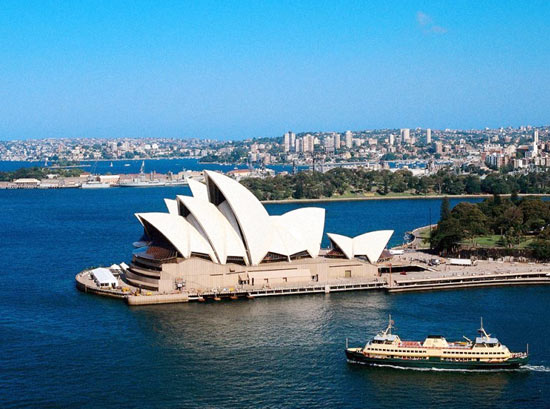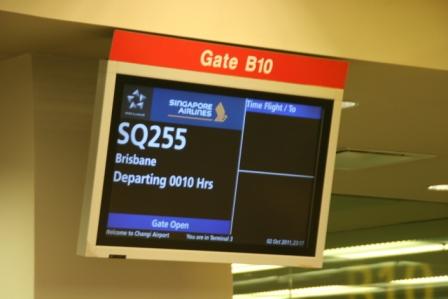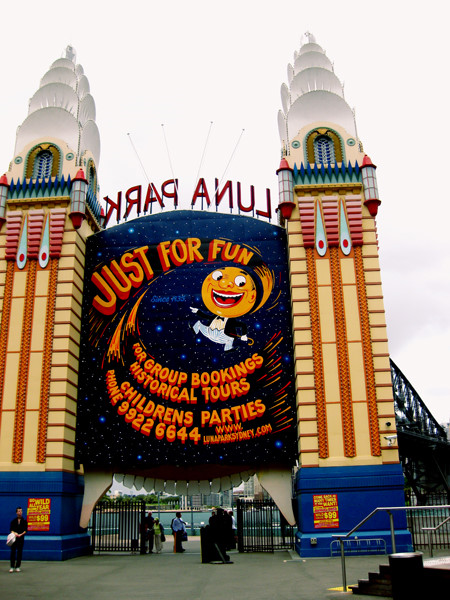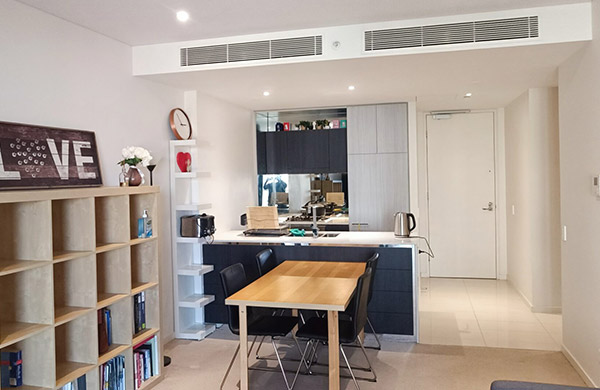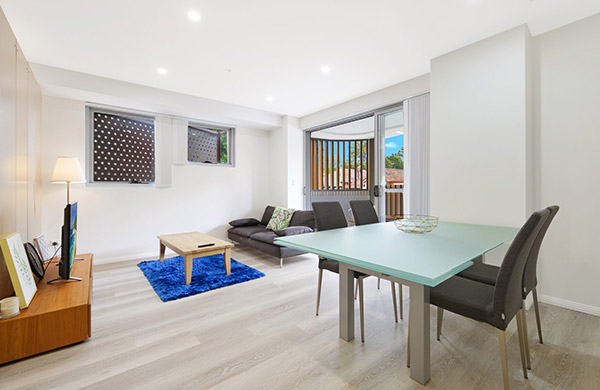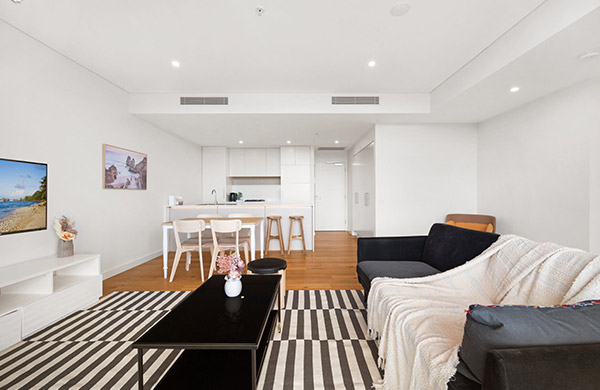Travel Guides and Stories
Enchanting "Rainbow Road" — The Ultimate Great Ocean Road Self-Drive Guide
After World War I, around 50,000 Australian soldiers returned from the UK. In the midst of the Great Depression in the 1930s, with the economy struggling and unemployment rising, the government assigned these soldiers to clear land and build roads. In 1932, the coastal highway stretching 180 kilometers from Geelong to Port Campbell was officially completed and opened. As “World War I” is often called the “Great War” in English, and because this road was built by veterans of that war, it was officially named the “Great Ocean Road.”
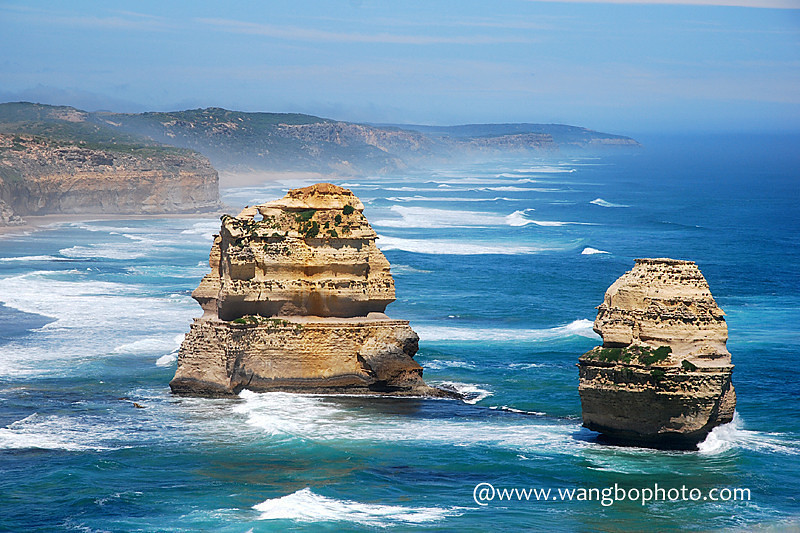
The Great Ocean Road, weaving between the roaring South Pacific and the majestic mountains of Victoria, Australia, stands tall among the world’s most spectacular natural landscapes. Driving along the Great Ocean Road is a journey of awe and wonder, with breathtaking sights at every turn. Each sea stack rising from the ocean has its own unique character, as if sculpted by the hand of nature itself. Whether it’s sunrise bathed in golden light or birds returning at sunset, the scenery here is unforgettable. From a helicopter, you’ll see the endless blue sky meeting the ocean, lush inland forests, white waves crashing against yellow beaches, and colorful birds strolling over red earth — all blending into a winding, dreamlike “rainbow coastline.” The Great Ocean Road can be divided into three main sections:
1. “Surf Beach” section: Torquay to Apollo Bay, 91.6 km, hugging the coastline.
2. “Green Rainforest” section: Apollo Bay to Princetown, 78.3 km, moving inland through the Great Otway National Park.
3. “Shipwreck Coast” section: Princetown to Peterborough, 30.3 km, returning to the coast and featuring the iconic Twelve Apostles.
It's best to explore these three sections over three days. Not only does this make for a more leisurely pace, but the stark contrasts between the landscapes will surprise you each day. Of course, thorough preparation is essential for a truly enjoyable holiday. Here’s what you’ll need for your road trip:
1. Car: Toyota Corolla (hatchback), automatic, rented from Hertz. Although the road is winding, it’s paved and suitable for regular vehicles.
2. Fuel: Cheaper in cities and bigger towns. If global oil prices are stable, Tuesdays and Wednesdays are usually cheapest (Australia pays weekly, so demand dips midweek).
3. Maps: Print out maps beforehand; Hertz will also provide one and mark key sections. GPS is essential, but a paper map is still handy.
4. Documents: Passport and driver’s license. International Student Card and YHA card are recommended for ticket discounts at attractions.
5. Food & Water: Stock up at a supermarket before you leave, especially for water in summer. Supermarkets are much cheaper than convenience stores.
6. Accommodation: Book online in advance. If you don’t have a booking, arrive early to secure a place. Hostels in Australia are of high quality — highly recommended!
7. Sun Protection: Sunblock (SPF 30+++ or higher), hat, and sunglasses are must-haves. The air is clear and UV is intense. Bring a small bottle from home, then buy more locally.
8. Local Routine: Australians usually turn in early, especially in rural areas. Always have food on hand in case restaurants have closed.
9. Avoid Rush Hour: Try to pick up your rental car outside of peak traffic times. City driving can be challenging, especially for first-timers and those new to driving on the left.
10. Watch for “Lookout” signs: These are the most common road signs on the Great Ocean Road, indicating scenic viewpoints about 200m ahead. Slow down if you want to stop.
For more on driving in Australia, see “Australian Self-Drive Experiences.”
● Visa: You’ll need a visa for Australia. Travel agency applications cost over 1,000 RMB, while applying directly at the consulate is about 700 RMB. Consulate address: Room 401, Shanghai Centre, 1376 West Nanjing Road, Shanghai; Tel: +862162798098 (Visa office).
Required documents:
1) Passport valid for at least 6 months (signed);
2) Recent passport photo (preferably color, white background);
3) Form 48R;
4) Form 54 (family members, English, one side only);
5) Leave letter from employer, stating position and duration of employment;
6) Company’s business license copy;
7) ID card copy;
8) Household registration book copy;
9) Proof of financial means (bank statement, property certificate, driver’s license, income statement, tax slip, payroll, social security card copy);
10) Itinerary in English;
11) Flight reservation copy;
12) Accommodation booking copy;
13) Insurance policy (optional but helpful);
14) Letter to the visa officer explaining your reason for returning (optional but helpful).
We transited through Kuala Lumpur; Malaysia gives a 5-day free transit visa to Chinese passport holders. AirAsia international flights land at LCCT airport. At arrivals, look for the “visa on arrival” counter — transit visa can be processed in about 15 minutes with your passport and onward ticket to Australia (or China). Leave at least 4 hours between flights to avoid any delays.
----------------------------------------------------------------
With everything ready, we set off — Day 1: Melbourne — Geelong — Torquay — Lorne — Apollo Bay
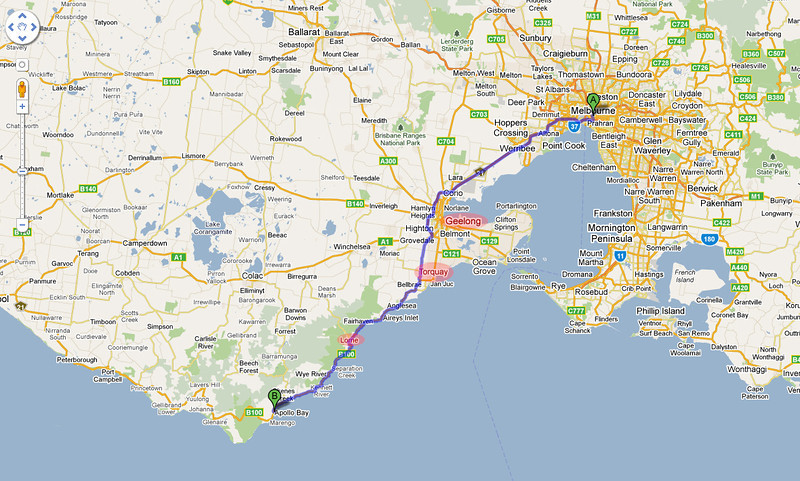
The map above highlights the main routes (M1 and B100) and key towns for Day 1. As this is the longest drive, start as early as possible. Leaving downtown Melbourne can be tricky, so GPS is helpful. Once on the M1 freeway, just follow the signs southwest. Geelong is roughly halfway and Victoria’s second-largest city — a good lunch and rest stop. As the sun brightens, keep heading southwest to Torquay, where the Great Ocean Road (B100) really begins. The speed limit is 100 km/h, but there are many bends with reduced speed — always follow the signs for safety. The road is single-lane and quite narrow, so be careful when passing other vehicles. Torquay is the gateway to the “Surf Beach” section, and home to the first major attraction — Bells Beach. Despite its fame, there was no one there when we visited, a stark contrast to famous attractions in China. The road to Bells Beach is thrilling, with big dips and rises. On a clear day, the ocean looks like a massive blue sapphire. From the lookout, you can often see surfers riding the waves.
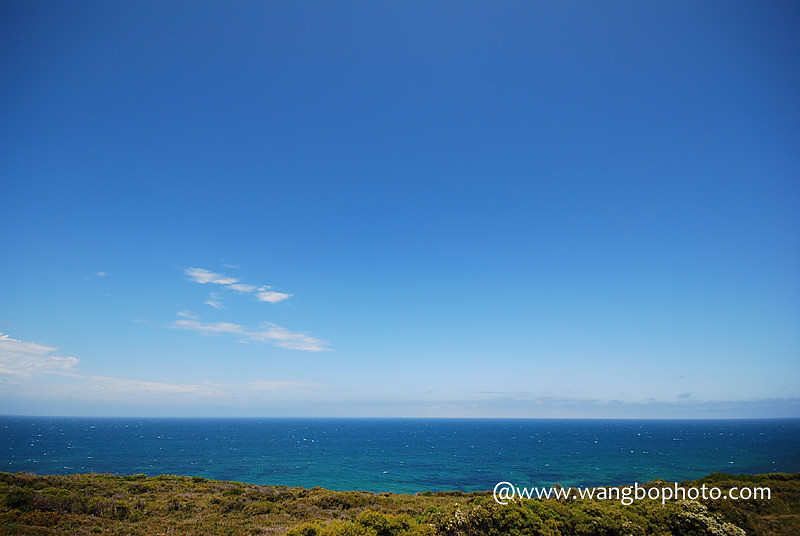
Bell's Beach
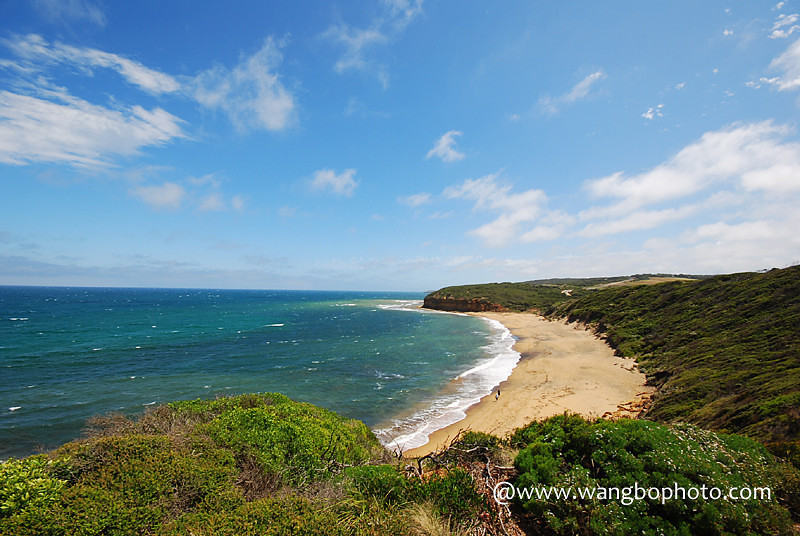
Continuing on from Bell’s Beach, rejoin the B100 and head to the next small town — Anglesea. It’s a peaceful spot with a small lake and a boardwalk, where egrets rest or soar above the water. A place as tranquil as its name, “Angel Sea.”
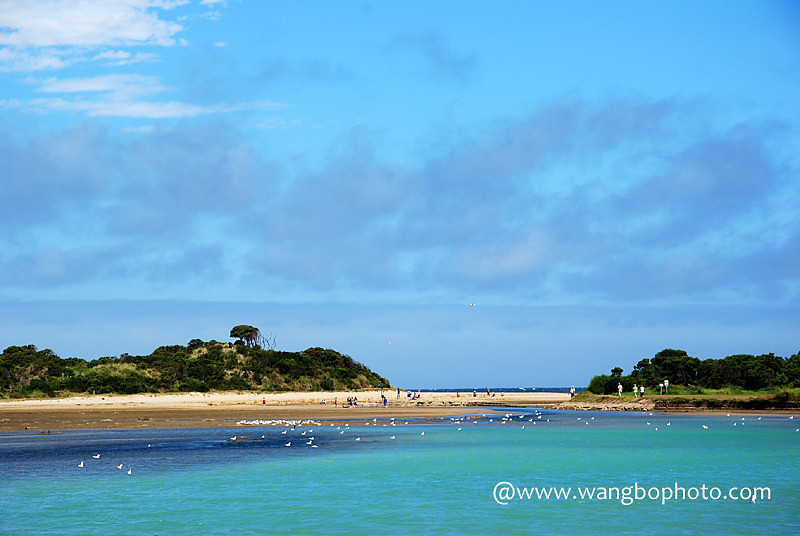
Further along B100 is Aireys Inlet, home to a picturesque lighthouse. Follow the signs for Split Point Lighthouse to reach the White Queen lighthouse — a striking white beacon, often shrouded in mist.
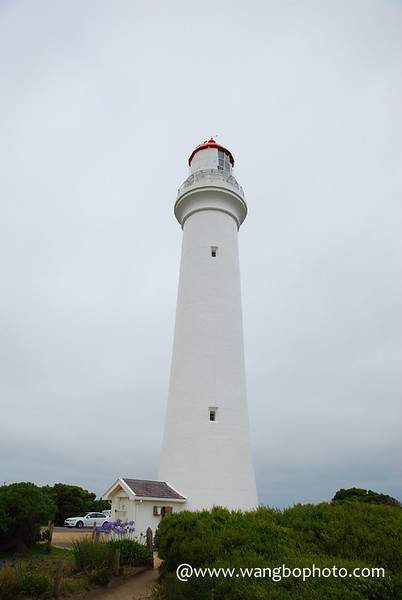
Next is Eagle Rock, a stunning natural sculpture. As dusk fell, the ocean turned gray and a bit intimidating, so we didn’t take any photos here. After Eagle Rock, continue on to Lorne, a colorful town with a fairytale feel and many families camping in RVs. If you didn’t get an early start, staying overnight in Lorne is a good option, but we’d booked the YHA in Apollo Bay, so we pressed on. The drive from Lorne to Apollo Bay takes about an hour. In summer, sunset isn’t until 8 PM, but dusk sets in after 6 PM. There are no facilities between Lorne and Apollo Bay, so make sure you have enough gas, food, and water before leaving Lorne. This section hugs the cliffs above the sea — both spectacular and a little scary.
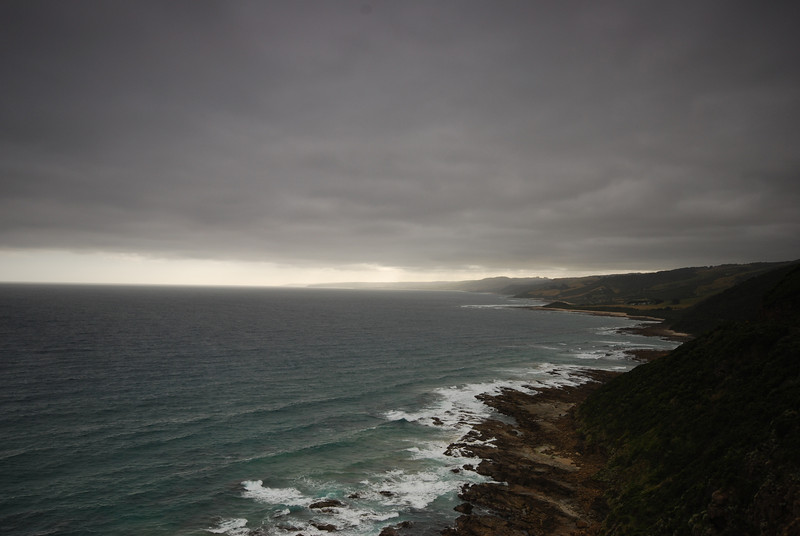
In our hurry, we were unfortunately caught speeding near Apollo Bay and received a hefty $448 fine. A word to the wise: always obey the rules — police everywhere are strict! We finally arrived at Apollo Bay around 7 PM and checked into the local YHA. Apollo Bay is a lively town at the end of the “Surf Beach” section, with a playground, pub, supermarket, and restaurants. Exhausted and a bit down from the fine, we had a quick pizza dinner ($15, huge!) and went to bed. The YHA in Apollo Bay is notable for its eco-friendly design — all sustainable materials, rainwater recycling, and no air conditioning. With a YHA card, a double room drops from $92 to $77, a great deal. Hostels are a great way to meet people and try cooking your own meals in the spacious kitchen. Some guests even work at the hostel for a while before continuing their journey. Note: the YHA is not on the main road, but Apollo Bay is small and easy to explore.
Day 2: Apollo Bay — Great Otway National Park — Lavers Hill — Princetown
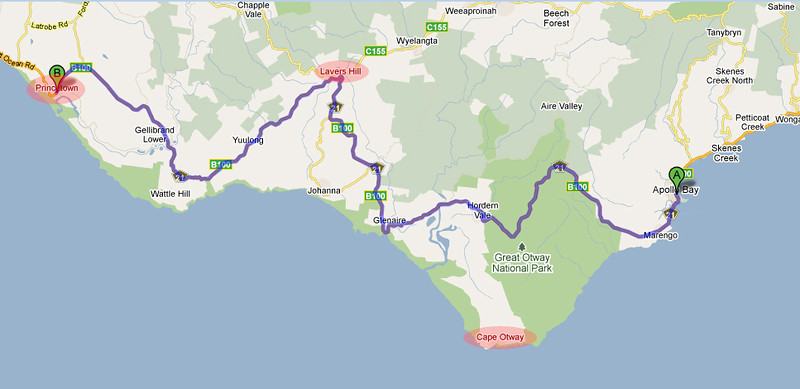
Day 2 enters the "Green Rainforest" section. The main route is shown above, but each major attraction is off the main road. First stop: Cape Otway Lighthouse.
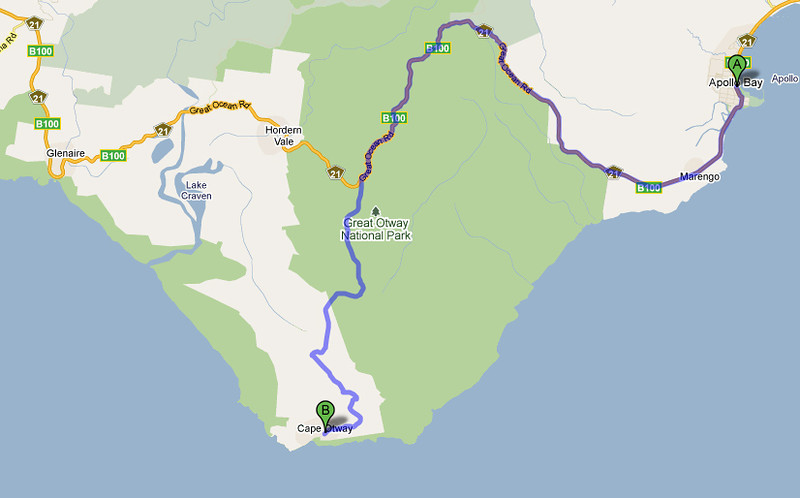
Drive along B100 to Great Otway National Park, then take the side road to the end for the Cape Otway Lighthouse — the oldest surviving lighthouse on Australia’s mainland, shining since 1848. For many European immigrants, it was the first light they saw after leaving Europe. Admission is $17.5 per person, or $7.5 with an international student card. The ticket seller was a friendly, Santa-like gentleman. The old buildings on site have staff in traditional English costumes explaining the history.
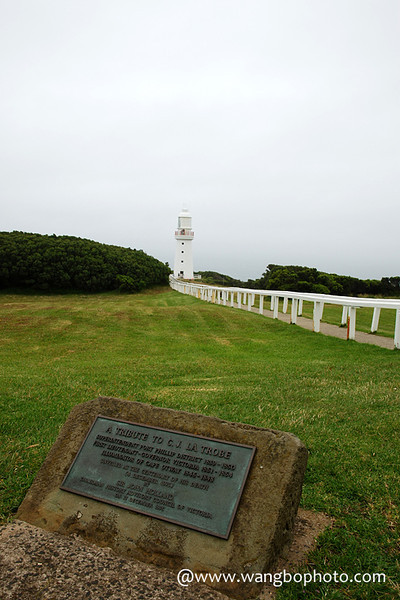
Leaving the lighthouse, you’ll pass through the national park (Australia is full of them!), with dense forests and diverse wildlife. We were lucky to spot three wild koalas — a rare sight even for locals! Koalas are famously lazy, sleeping with bark over their faces...
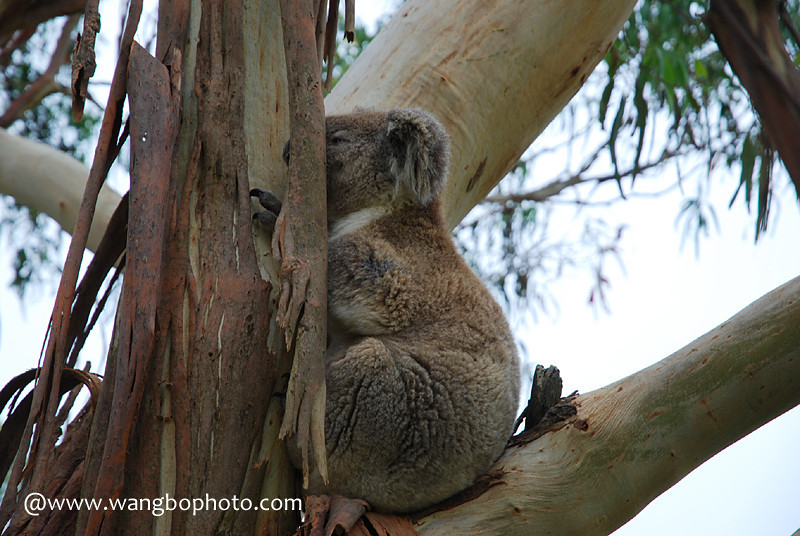
Even after pulling the bark away, this one didn’t wake up — look at those sleepy eyes!
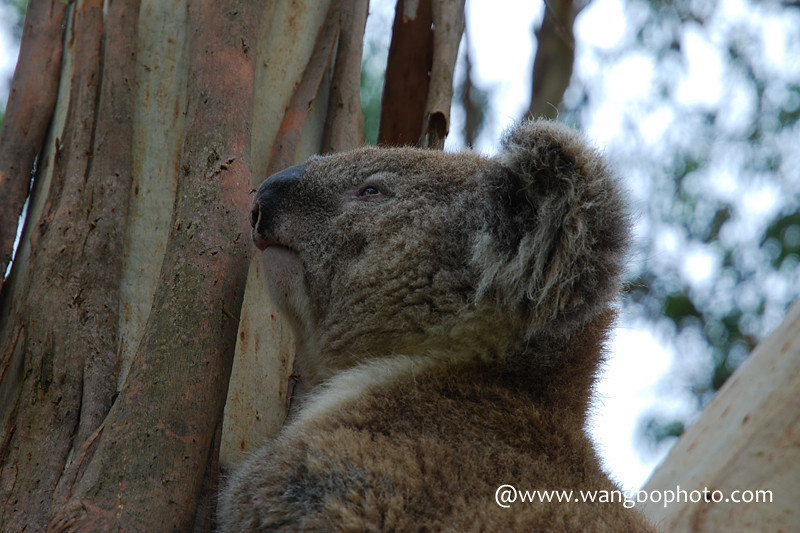
From behind, this koala looks so chubby and cute.
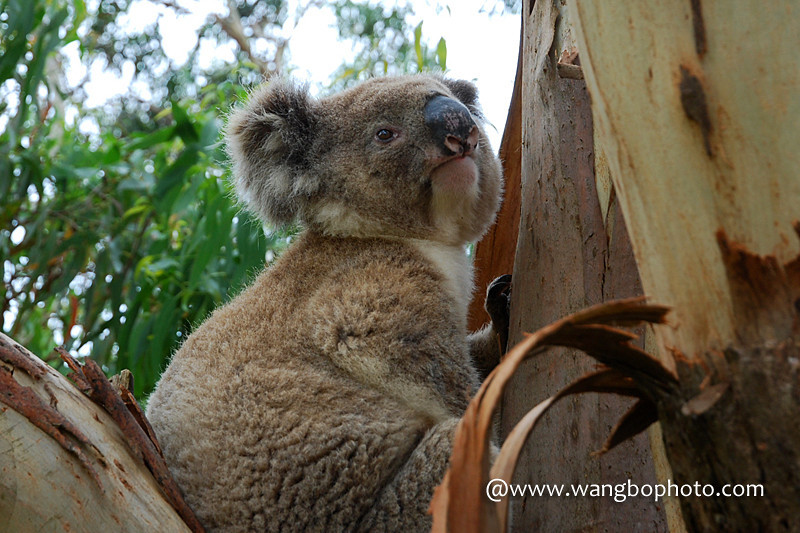
Their claws are actually very sharp, perfect for gripping tree trunks.
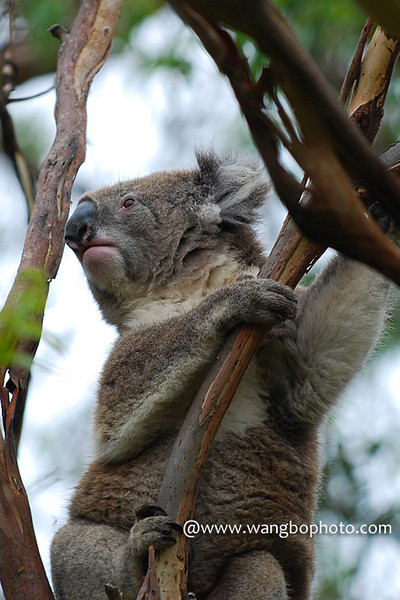
Finally, it looked at me — smile for the camera :)
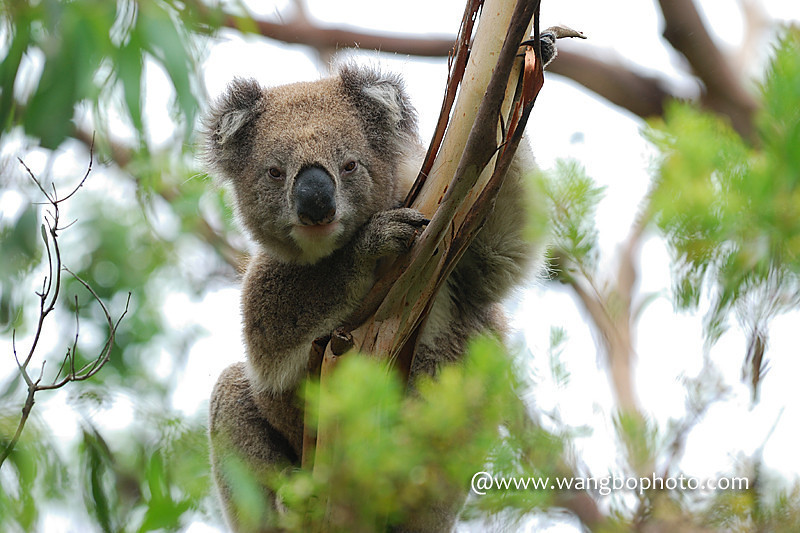
Next up: Otway Fly Treetop Walk.
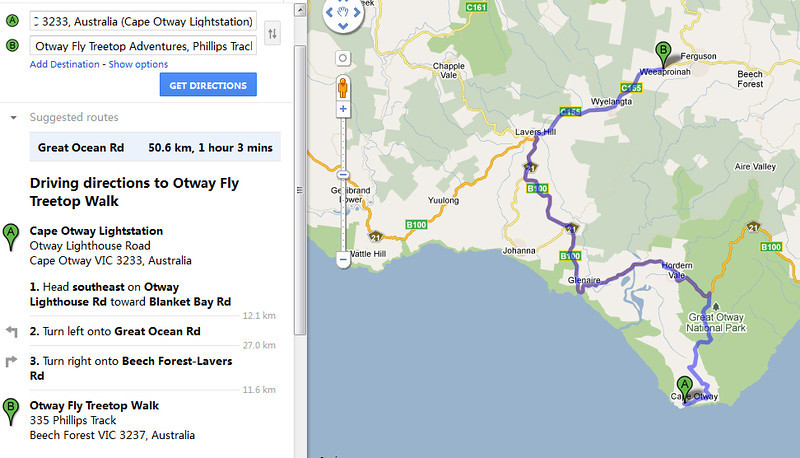
From Cape Otway Lighthouse, return to B100 via Great Otway National Park, continue to Lavers Hill, then take a side road northeast for about 12 km. The official website has more details. The Treetop Walk is a unique Australian attraction, also found in forest parks in Western Australia (like King’s Park in Perth, where it’s free). Elevated walkways connect towers among the treetops, allowing visitors to see the forest’s layered ecosystem while protecting the environment. The towers reach up to 30 meters high.
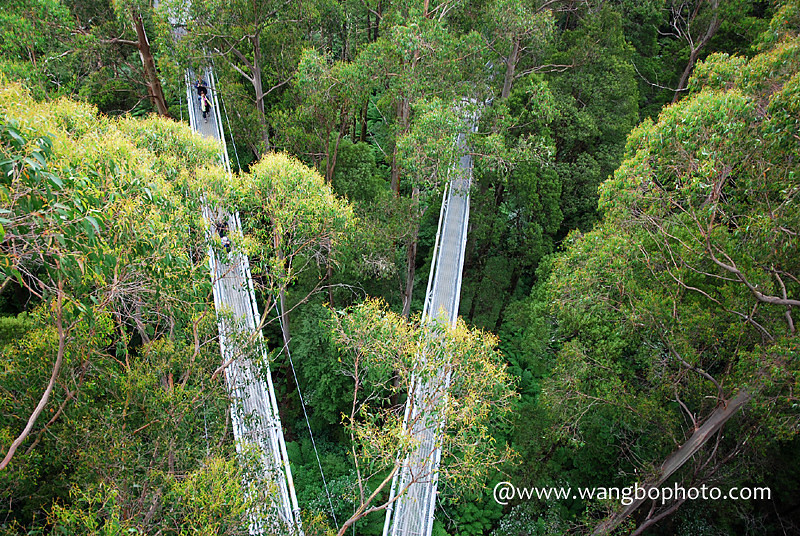
Walking among the treetops
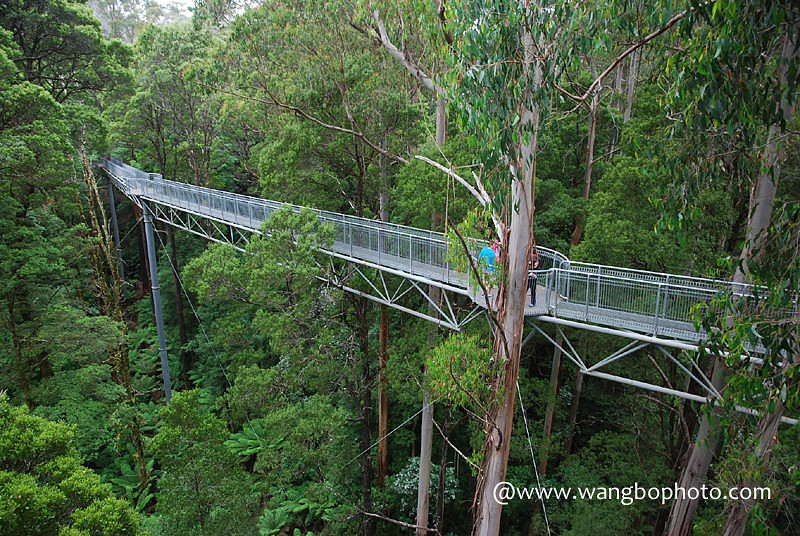
Looking down from the walkway
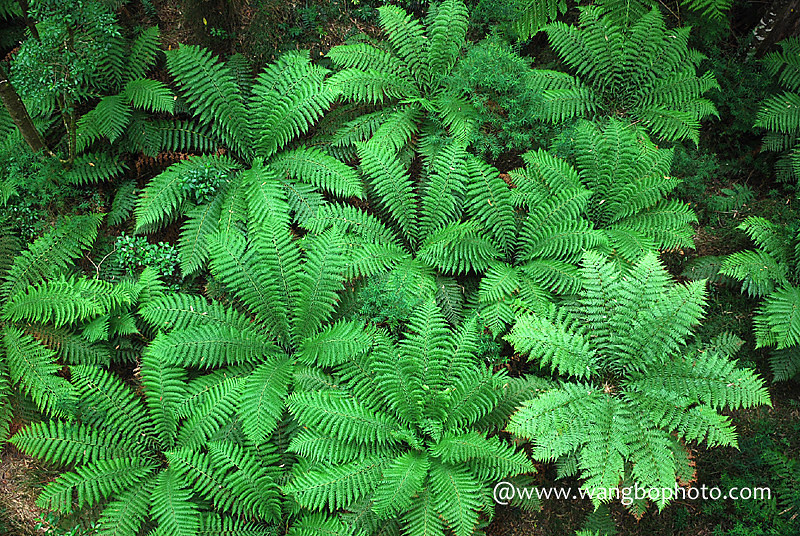
Observing the multi-layered forest ecosystem below
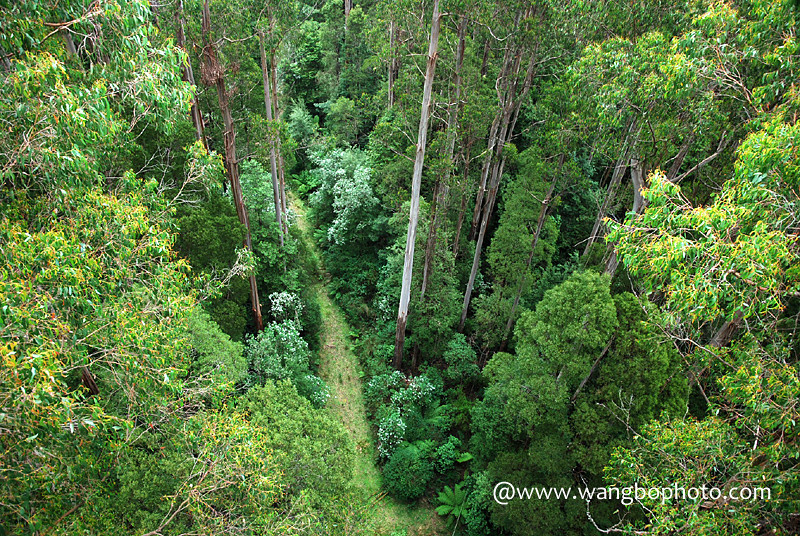
Tickets are pricey at $22 per person, with a slight discount for YHA cardholders. The walk takes about 40-60 minutes. When we finished at 5 PM, thick fog had rolled in, making for a slow and cautious drive out of the rainforest. It’s safer to leave the rainforest before dusk, as the roads are winding and slippery. Around 7 PM, we reached Princetown, the closest small town to the Twelve Apostles (about 6 km, a 10-minute drive). Princetown is tiny, with just a few buildings, but our hostel (13 Apostles) was lovely and affordable ($80 for a double). The friendly owner told us sunset at the Twelve Apostles was around 7:30, so we quickly dropped our bags and drove out. Though the clouds were thick, the dramatic scenery was awe-inspiring.
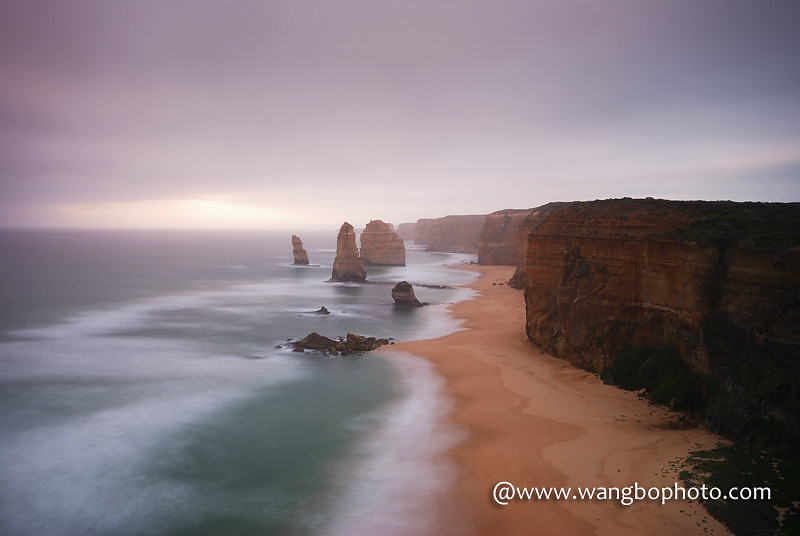
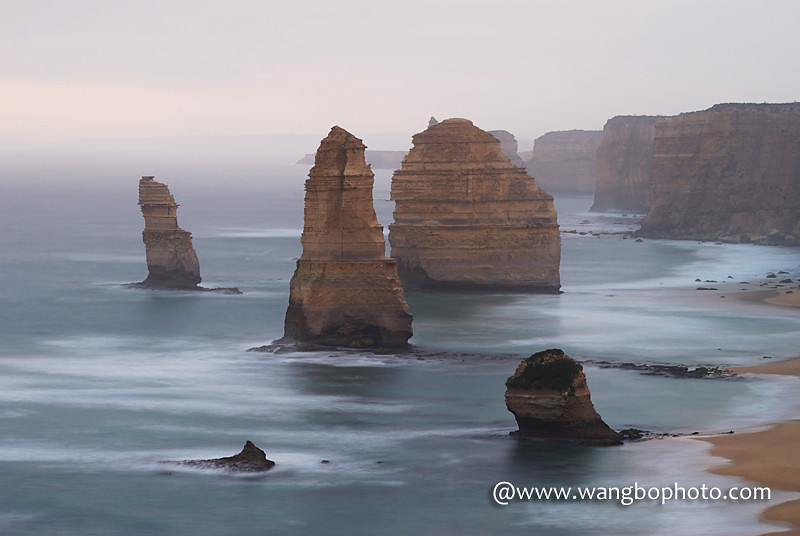
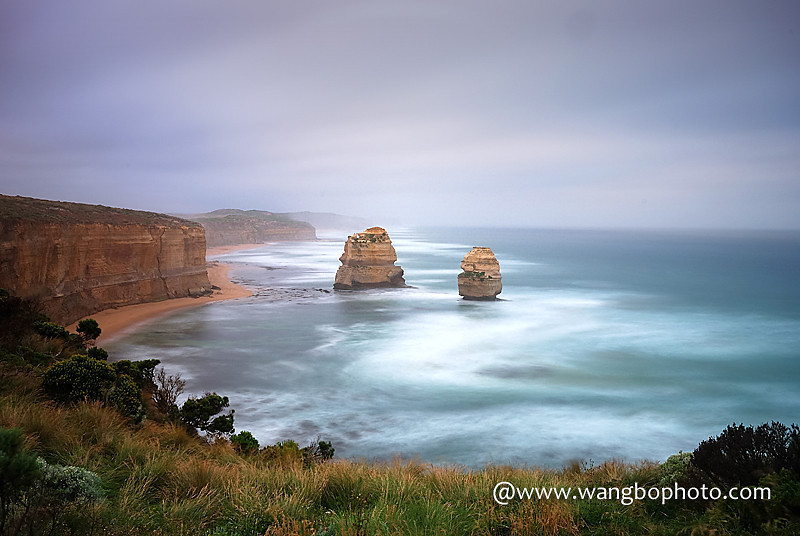
Day 3: Princetown — Port Campbell National Park — Port Campbell — Warrnambool

The third day is the most exciting along the Great Ocean Road — clear skies and calm seas allowed us to fully enjoy the spectacular highlights. Having missed a golden sunset at the Twelve Apostles the night before, we woke at 4:30 AM hoping to catch sunrise. We were the first visitors at the viewing platform, but thick clouds lingered, so no perfect sunrise photos this time. After a nap back in Princetown, the sun came out in full force, so we drove out again to the Twelve Apostles. Note: The B100 from Princetown to the Twelve Apostles runs parallel to the coast but about a kilometer inland. The Twelve Apostles site is marked by a sign — turn right into the free parking lot, where there’s also a helicopter pad. Cross the underpass to reach the viewing platform. There’s also Gibson Steps nearby, where you can walk down to the beach for a close-up view of the rock stacks. In the sunshine, the whole coastline is bursting with life.
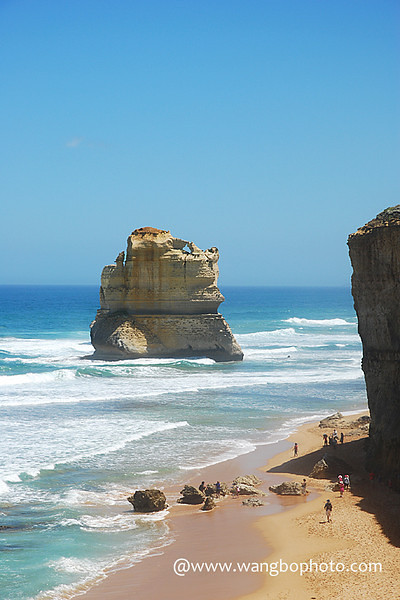
Up close with the majestic Twelve Apostles
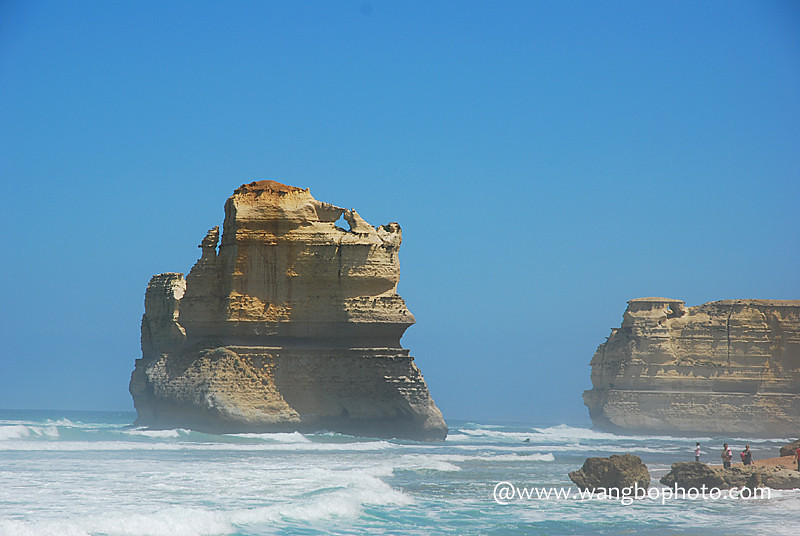
After visiting the beach, we returned to the parking lot, now full of tour buses. Most tour groups head straight to the helicopter ticket office (not the free viewing platform). If traveling independently, you can join a group for a group booking — helicopter rides start at $95 per person, or $75 for group bookings. There are 8-seat red helicopters and 4-seat yellow ones. For photographers, the front left seat in the smaller copter offers the best view. Wear dark clothes to minimize glare in photos. Though pricey, the experience is unforgettable — only from the air can you appreciate the full grandeur of the Twelve Apostles. The red helicopters are especially striking!
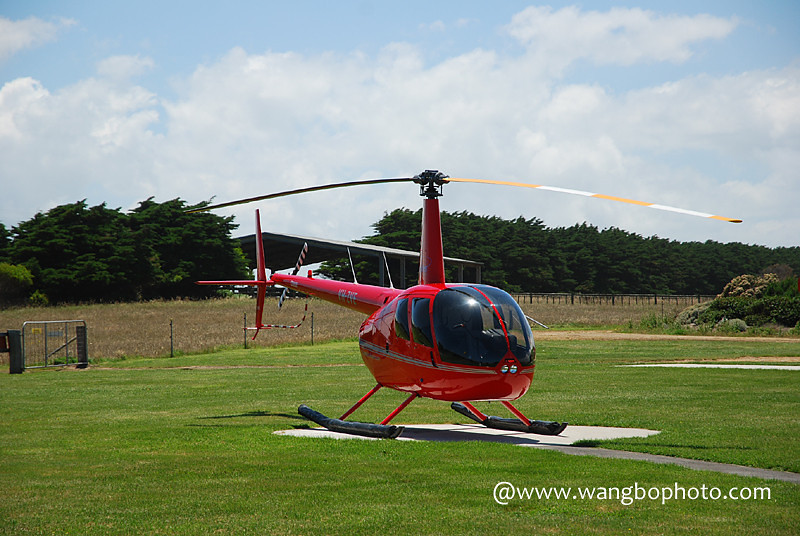
Taking off: five helicopter pads, parking lot, B100, and the coastline with the Twelve Apostles beyond.
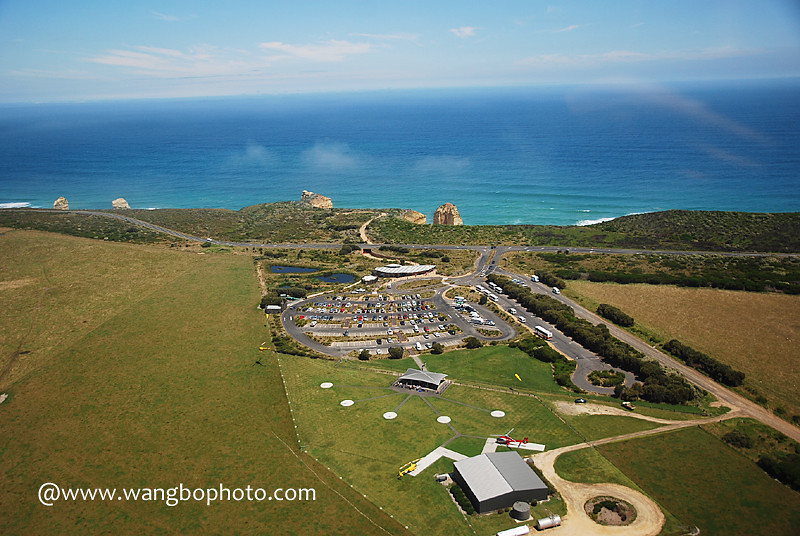
Aerial view of the coastline
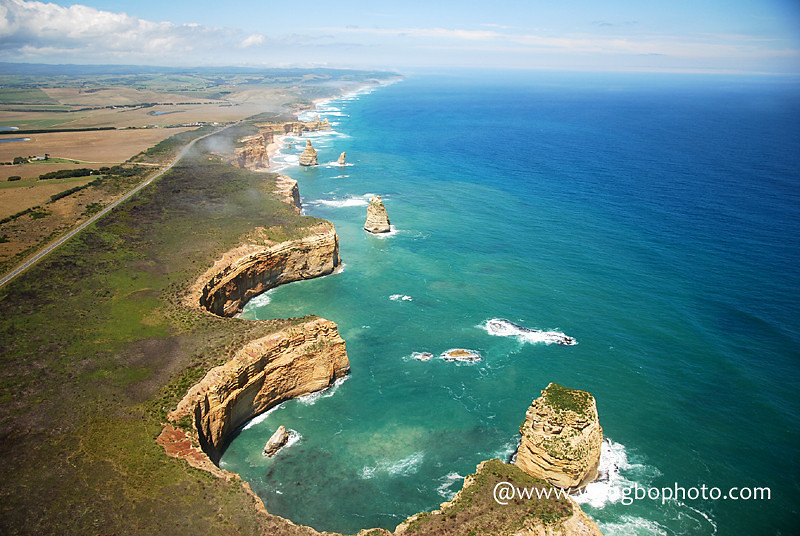
For millions of years, the South Pacific has battered these limestone cliffs.
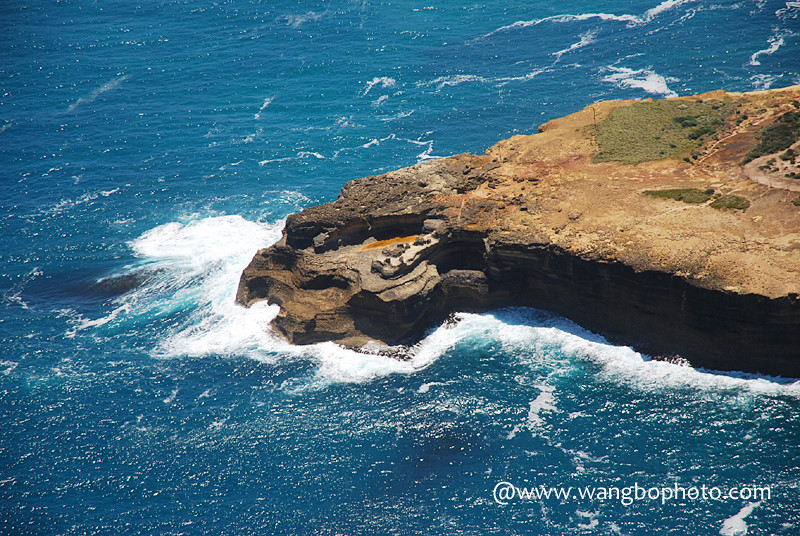
Cheese-like stacks in the blue waves
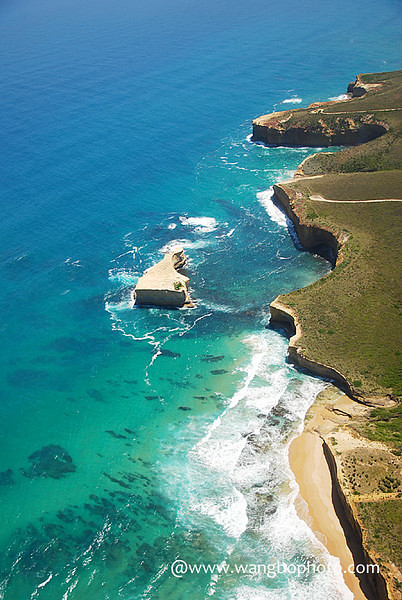
The endless, winding coastline
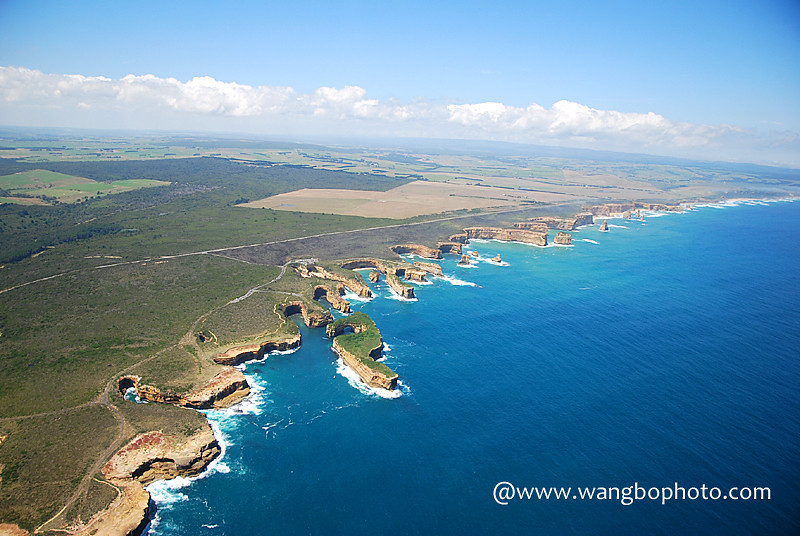
Aerial view of the Twelve Apostles
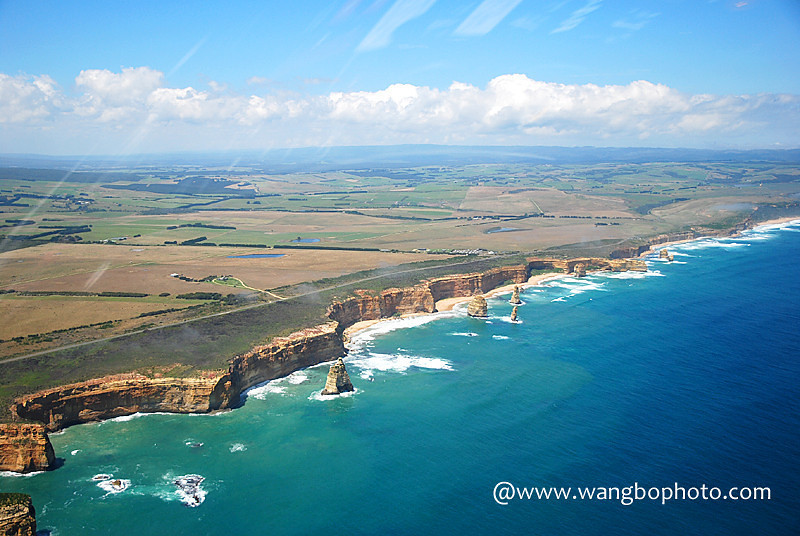
A closer look
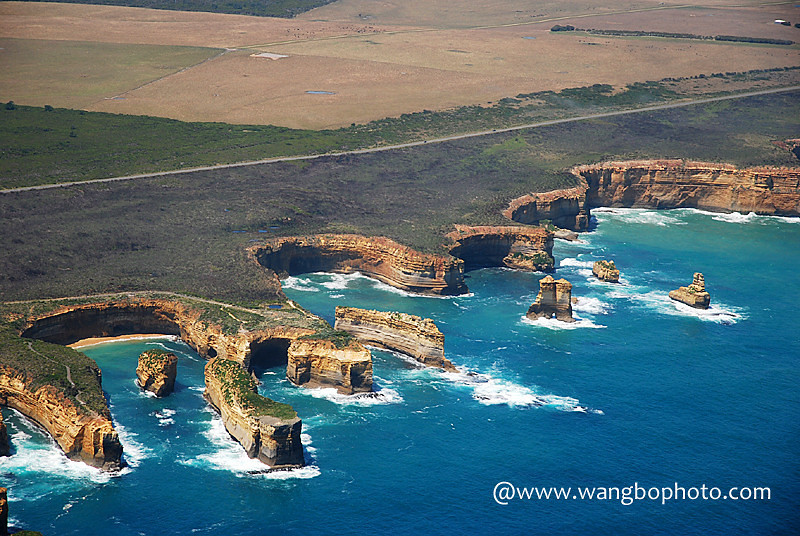
The most iconic stretch of coastline
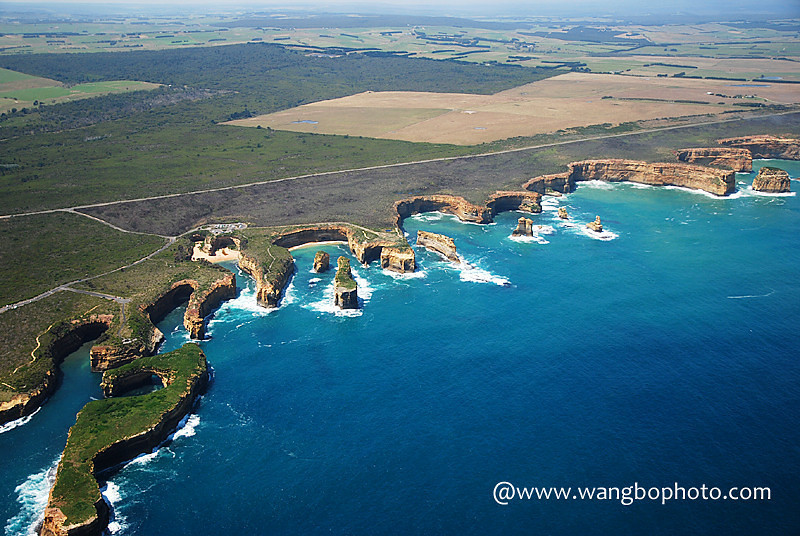
One last aerial shot of the Great Ocean Road and the Twelve Apostles
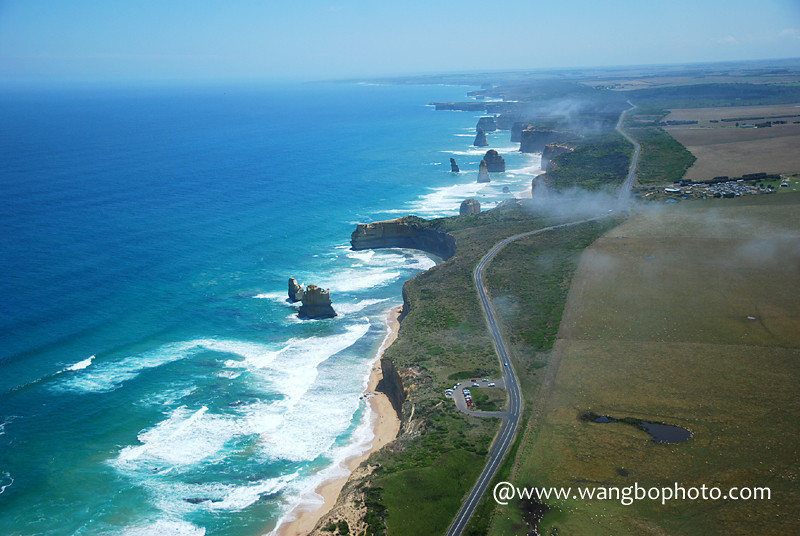
The flight lasts just over 10 minutes, but the memory lasts a lifetime. After the ride, we returned to the viewing platform for more photos. Note: There are no longer “twelve” stacks — several have collapsed over the years (most recently in 2005 and 2009), making it a “disappearing wonder.” The pile of rocks you see is the remains of a fallen stack.
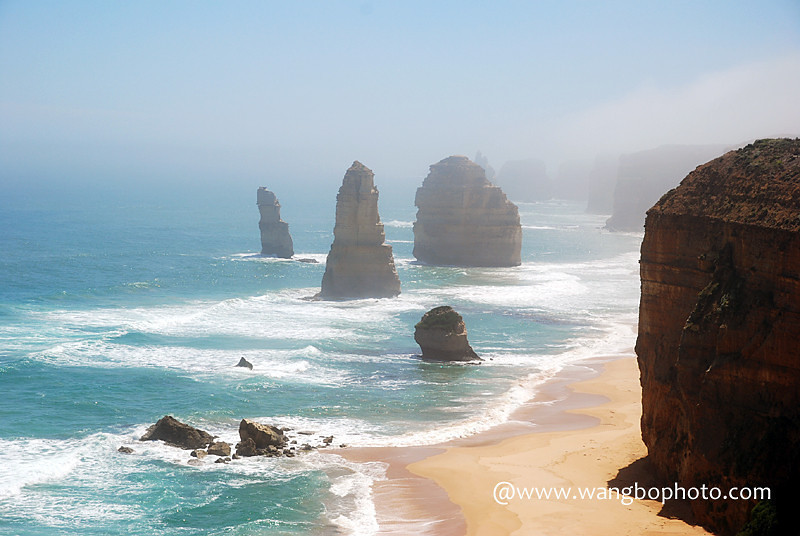
The stacks are scattered on both sides of the viewing platform, with two more on the far side.
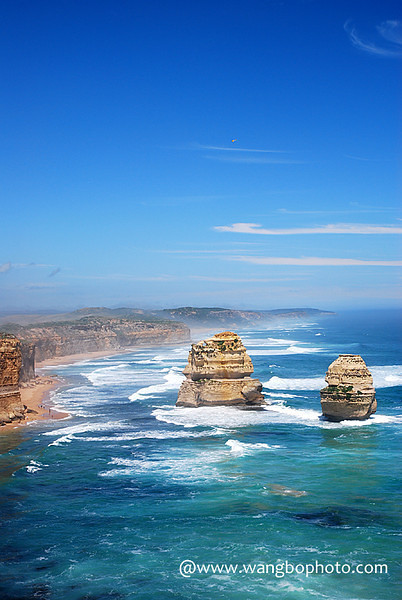
Blue sky, blue sea — utterly mesmerizing! Notice the stack on the right is also close to collapse?
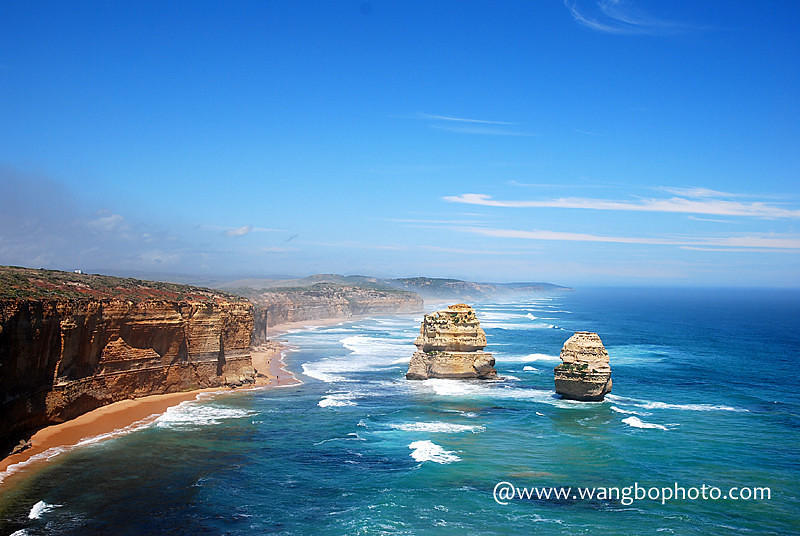
A more magical shot
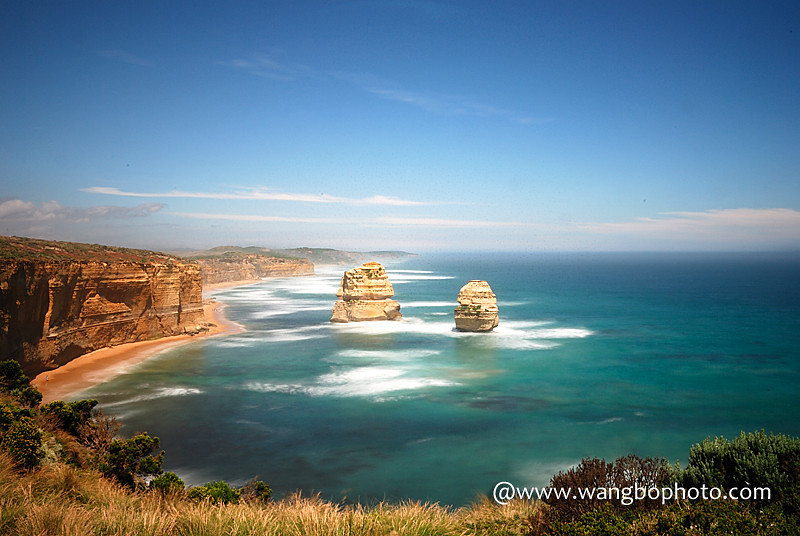
From the Twelve Apostles, the B100 runs to Bay of Islands, with frequent lookouts along the way. Bay of Islands is about halfway between Warrnambool and Port Campbell. Loch Ard Gorge is a major attraction with a beach and caves to explore.
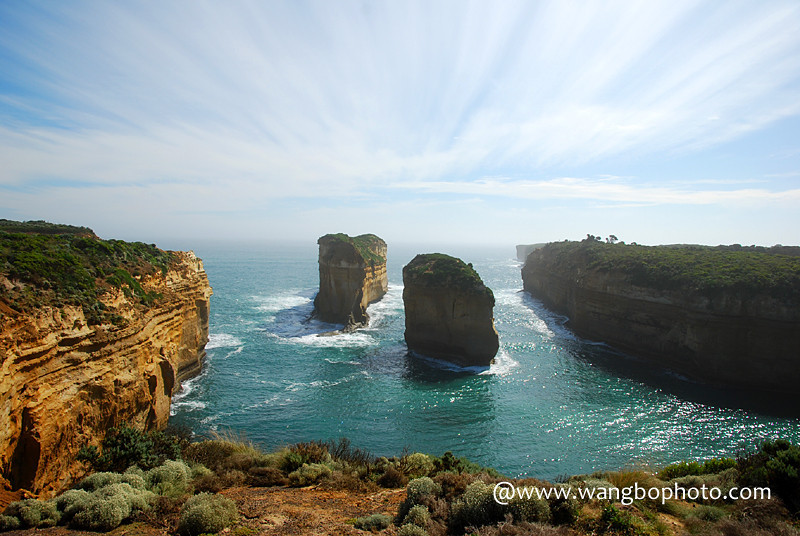
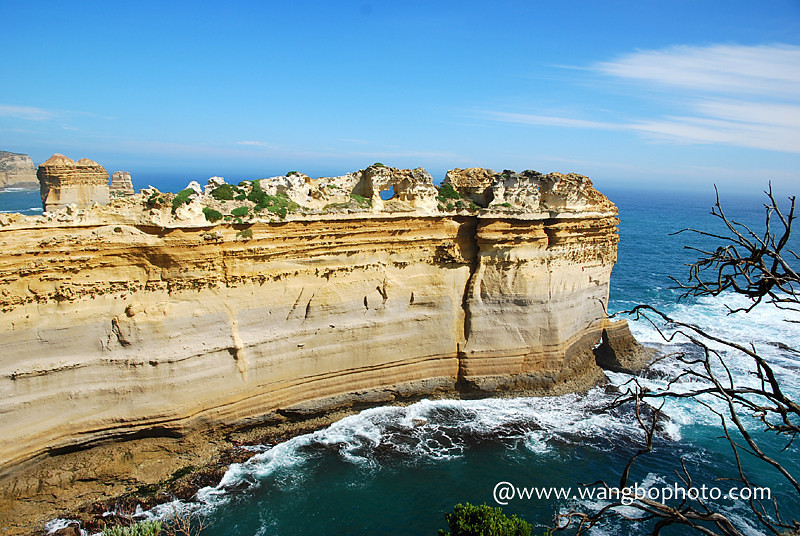
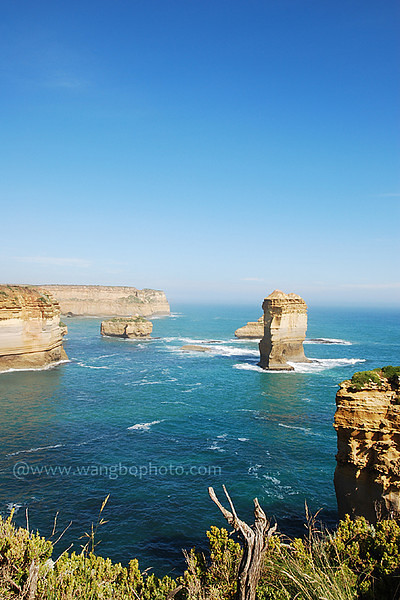
Scenic roadside views
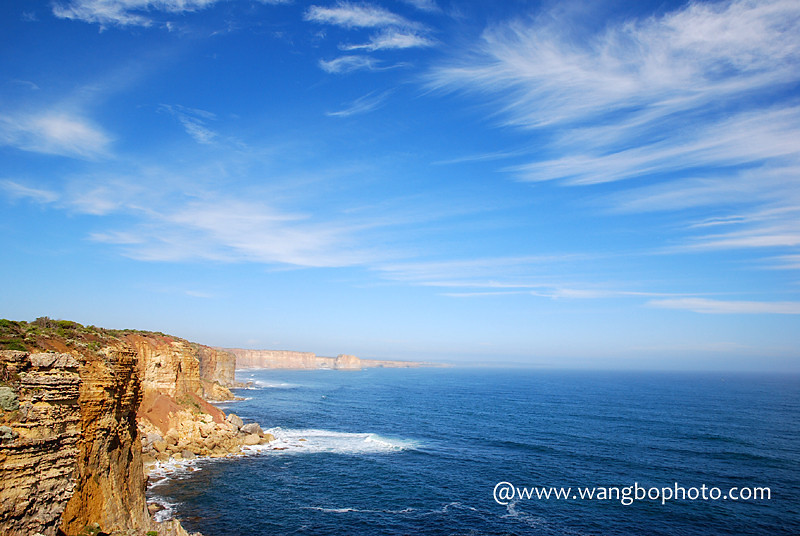
Looking out over Port Campbell
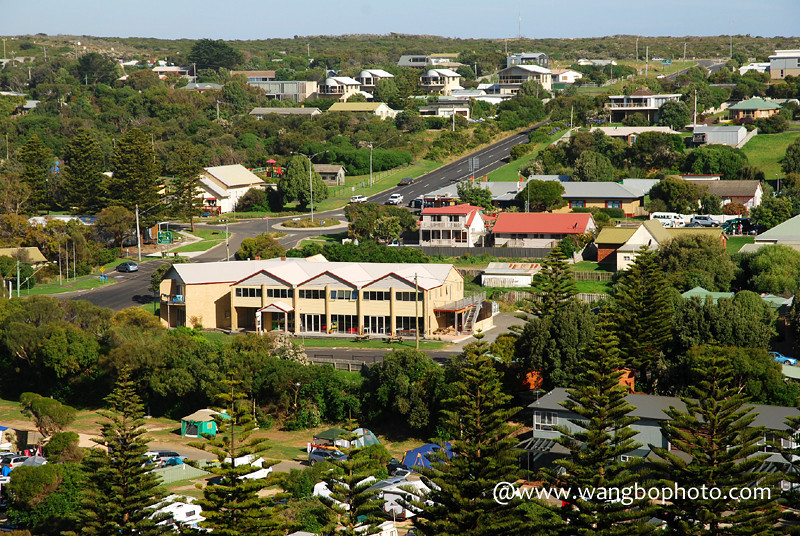
The Arch
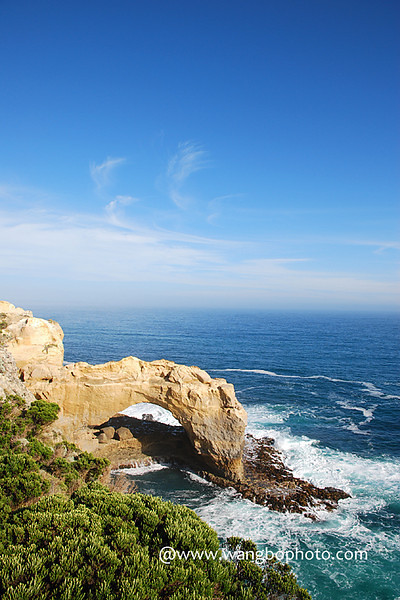
London Bridge: This famous spot once had two arches; the left side collapsed in the 1980s, leaving the remaining arch cut off from the mainland. A couple stranded on the arch had to be rescued by helicopter. Ironically, when reporters asked about the experience, the woman was talkative, but the man looked worried — he was with his lover, not his wife!
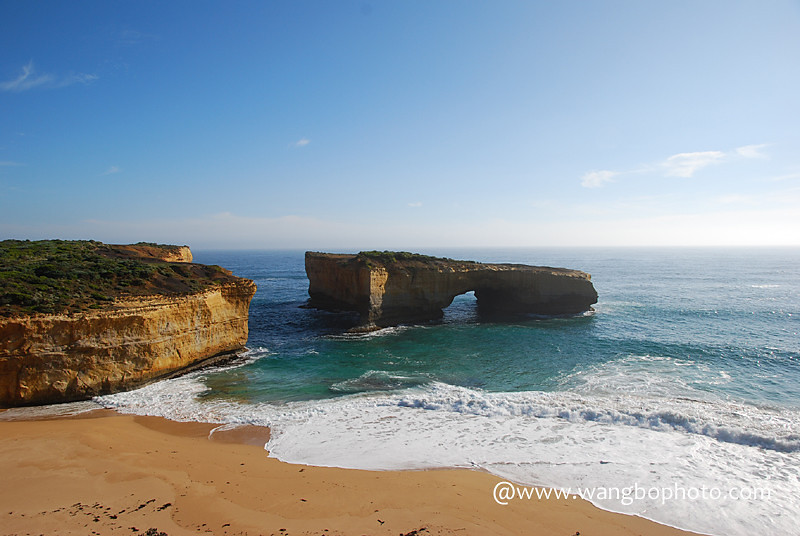
The formation and evolution of these coastal rock formations — arches and pillars — is a continuous process: the South Pacific erodes the limestone coast, forming arches and bridges that eventually collapse into pillars like the Twelve Apostles, which in turn crumble into the sea, creating a new coastline. The Grotto
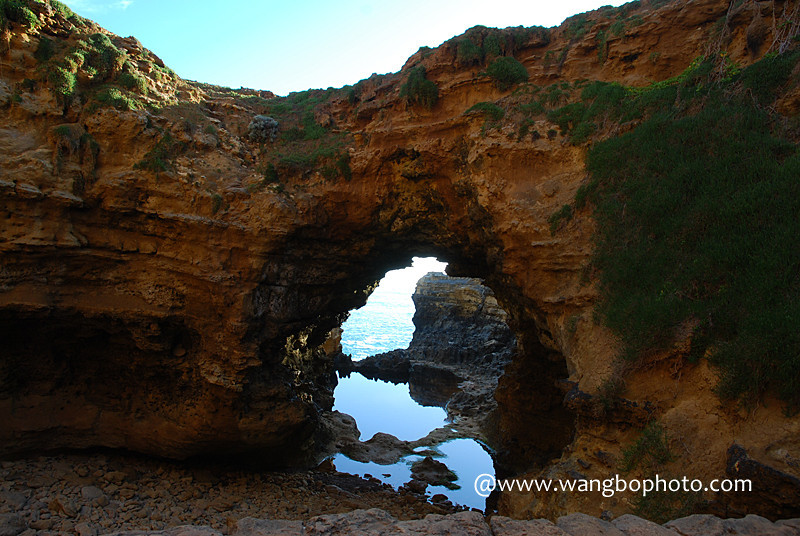
Bay of Islands
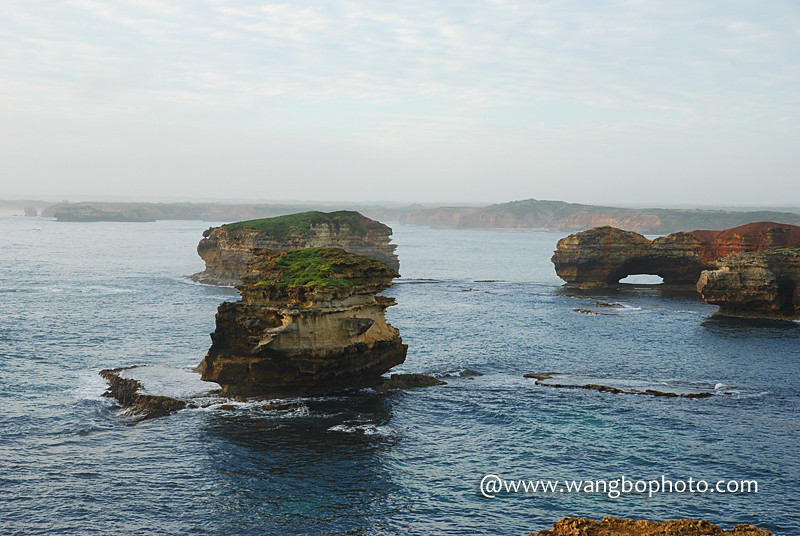
After Bay of Islands, the highlights of the Great Ocean Road come to an end. If you visit every site, it will be late in the day by the time you finish. At this point, refuel (but just enough — gas is pricier in tourist areas). Push on for about an hour to Warrnambool, a major town where you can fill up again at a cheaper rate. On the highway to Warrnambool, watch for a three-way intersection and take care not to miss your turn.
Day 4: Warrnambool — Camperdown — Colac — Geelong — Melbourne

The fourth day is the return journey, covering the main highways A1 and M1 for about 270 km (3-4 hours’ drive), passing through classic country towns. Camperdown, Colac, and Geelong are good stops for food or rest. The return leg takes 5-6 hours in total, so start early (before 9 AM), take lunch breaks in Camperdown or Colac, refuel in Geelong, and aim to return the car by 5 PM to avoid parking hassles in the city. Make sure you reserve your Melbourne accommodation ahead of time for a smooth finish. Camperdown’s town center is lined with neat rows of trees, a peaceful setting I really loved.
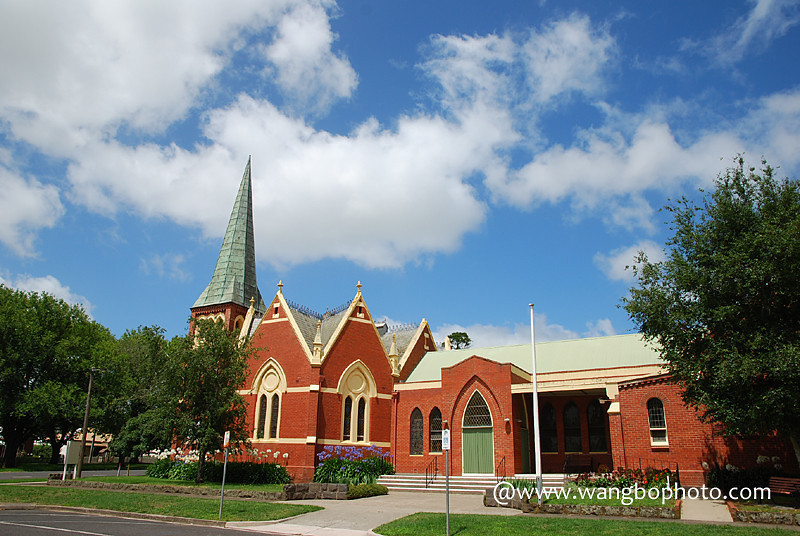
The center of many small towns is a tidy grove of trees, creating a wonderfully tranquil vibe.
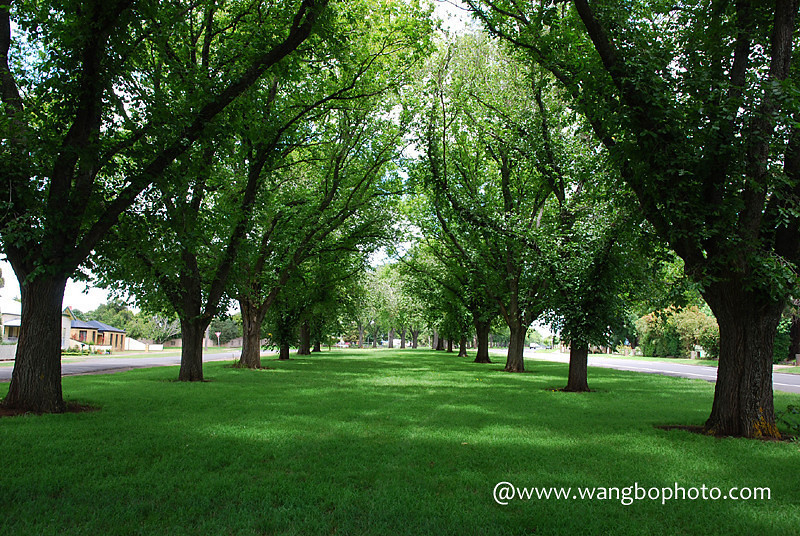
As night falls, wander Melbourne’s long Chinatown for a relaxed dinner. Stroll hand-in-hand or take a horse-drawn carriage back to the Victorian era. Pause at grand churches, soak in historic architecture, watch the Australian Open at Federation Square, or enjoy the dazzling Yarra River lights — a fitting end to your Great Ocean Road adventure. A classic Victorian-era train station:
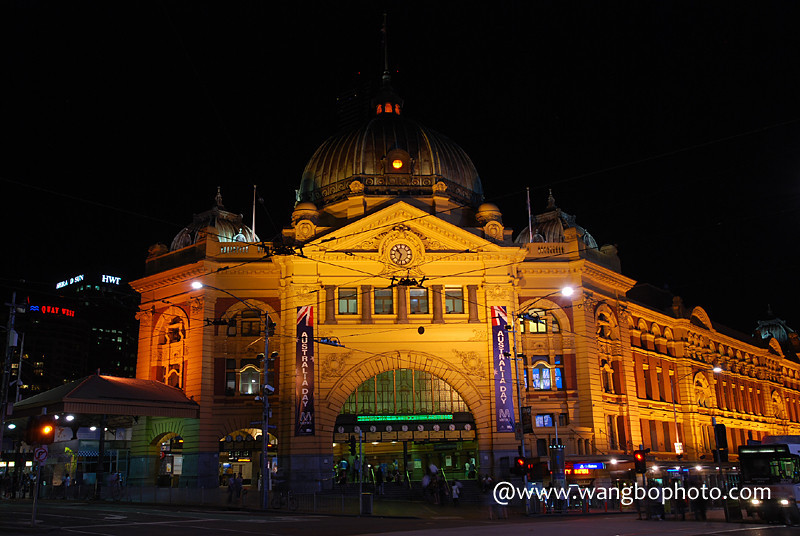
Federation Square offers a striking contrast across from the station.
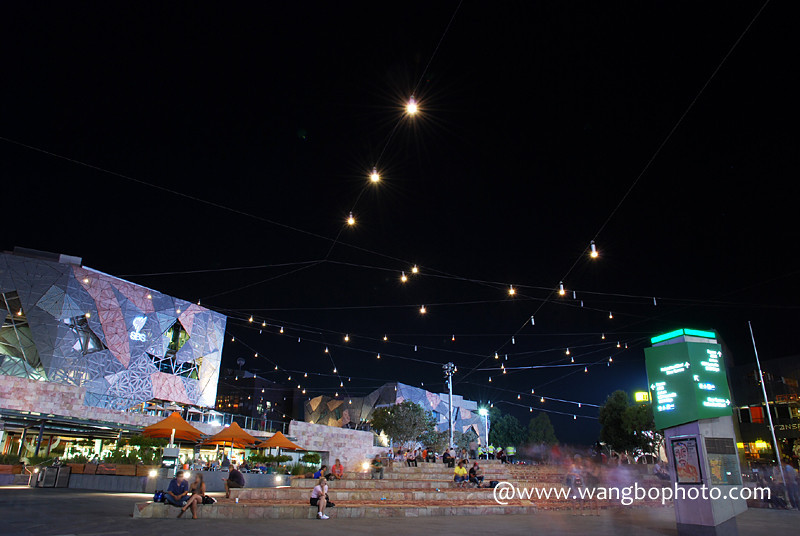
Melbourne's CBD
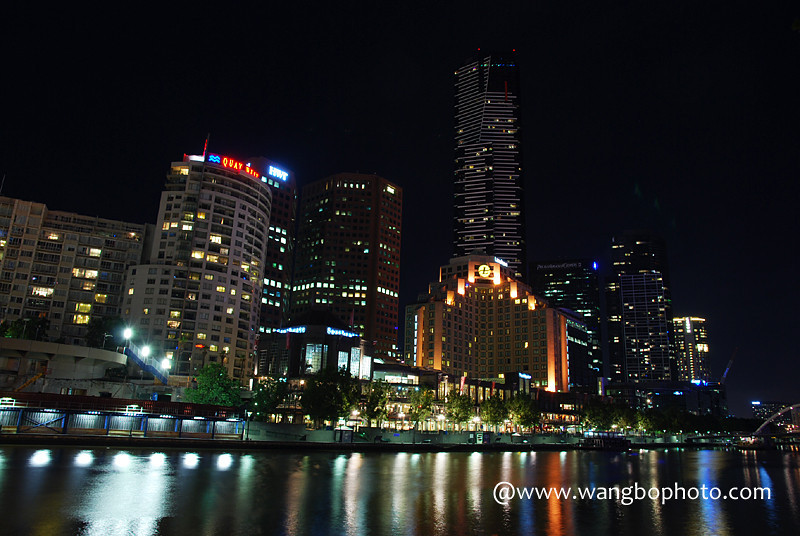
LIMITED TIME OFFERS
Related Apartments
Premium accommodations at exceptional prices.
Elevate your travel experience with our carefully curated holiday deals.
 Carabella Street, Kirribilli NSW, Australia
Carabella Street, Kirribilli NSW, Australia $200 - $350
-
2 Bedrooms
-
2 Baths
-
3 Guests
 Windsor Road, Dulwich Hill NSW, Australia
Windsor Road, Dulwich Hill NSW, Australia $150 - $250
-
1 Bedrooms
-
1 Baths
-
1 Guests
 Parkes Street, Ryde NSW, Australia
Parkes Street, Ryde NSW, Australia $180 - $350
-
2 Bedrooms
-
2 Baths
-
2 Guests
 Crystal Street, Waterloo NSW 2017, Australia
Crystal Street, Waterloo NSW 2017, Australia $188 - $288
-
2 Bedrooms
-
2 Baths
-
2 Guests



![[AUS Koala Country Travelogue] Season 3 — Gold Coast Chapter](https://www.sydneynest.com/uploadfile/202506/a2cc2d28ca567b4.jpeg)
